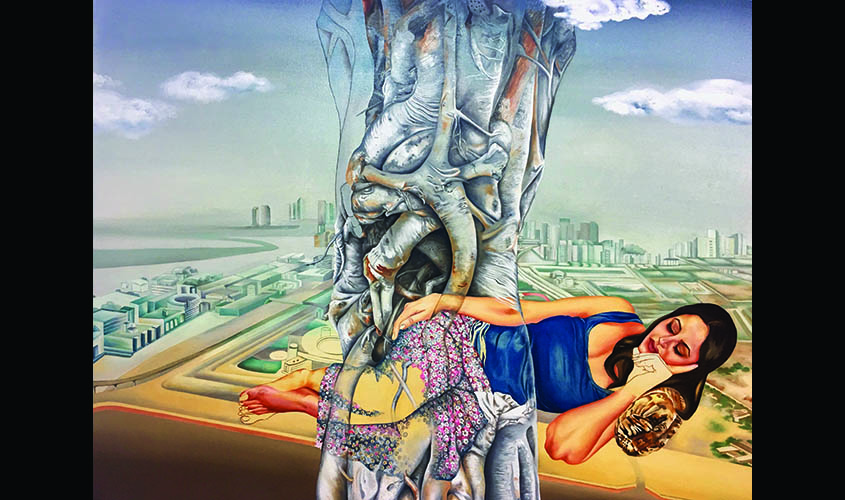Kanchan Chander is an Indian artist who was the recipient of the Print Biennale Award in 1985, and has also been honoured with the Sahitya Kala Parishad Award.
Elaborating on the themes she focuses in her artworks, she says, “I look at torsos. I make my artworks from a woman’s standpoint. For me, a woman is ‘an Incarnation of tolerance’. She is sensuous, sensitive and a symbol of empowerment. She has compassion, fertility and warmth while embodying the various roles a woman undertakes in her daily life.”
She further believes, “A woman is capable of being a plumber, carpenter, technician, mother, housewife and colleague. She has the compassion of Goddess Durga and the motherly form of Goddess Gauri Jagadamba, and the abundance and fertility of the Lajja Gauri.”
Her series of paintings tries to highlight women’s issues and the various roles a woman plays in society. “It saddens me to see that while women are progressing in professional fields, some mindsets still remain stagnant and regressive, with women still being subjected to emotional and physical violence,” she said.
The materials she used to embellish her artworks include “sequins, swarvoskis, stickers, wrapping paper and found objects. Else I superimpose images using a digital platform, thus creating a ‘kitsch’ form. Life today is a kitsch hotch-potch of too many things happening at same time!”

Apart from Chander, Mukesh Sharma is also participating in this edition of The Luxury League. He is done around 35 solo and group shows in India and is known for assimilating modern and traditional Indian elements in his artworks.
It is not easy to capture the virtuosity and multitude of an artist like Mukesh Sharma in a few words. His journey, from a humble village of Rajasthan to the urban bustle of Delhi, is filled with emotive and tangible memories. He is never settled. However, the core of his endeavor addresses and narrates a journey back in time to the lore’s and myths of the rural surroundings of his early life.” He has always carried within him many of these lores and one particular image from the cycle of myths: the image of the great serpent Naga representing ever flowing time. It has preoccupied him.
Sharma has made it a point to address global issues as well, including technological change and how its outpourings alter the aesthetics of a society. Commenting on the same, he says, “In this context, it is becoming increasingly important for me as an artist to synthesise global visuals into a local vocabulary. Most importantly, I am determined to bring these pieces to the notice of people who would not necessarily visit galleries, or museums. My work, therefore, can often be found in unpredictable places, where my intervention will inevitably be the source of discussion and where it aims to raise awareness of certain issues.”
Hi latest project is called NAGRAJ, a large-scale sculptural installation made out of millions of discarded computer keys, metal pieces, bean bags, sanganeri silkscreen prints, mosquito net sand varied kinds of industrial paints, etc. The idea behind this artwork is “to represent the aeonic-time which exists between the timeless world of idea and the time-bound perishable world of our reality. The multi headed body otherwise defies the organisation and linearity of a natural creature and leading back to the chaos of early forms of creation. For me, it is a way to examine the relationship between myth and the genesis of a myth. And to speak for those traditions that are made redundant by consumer culture or simply by the circumstances of history. The idea is how we are enslaved by technology and how this simple keyboard is taking over lives. Thus it is transpose to a spatial design of urban dream with distant memory of the past.”

